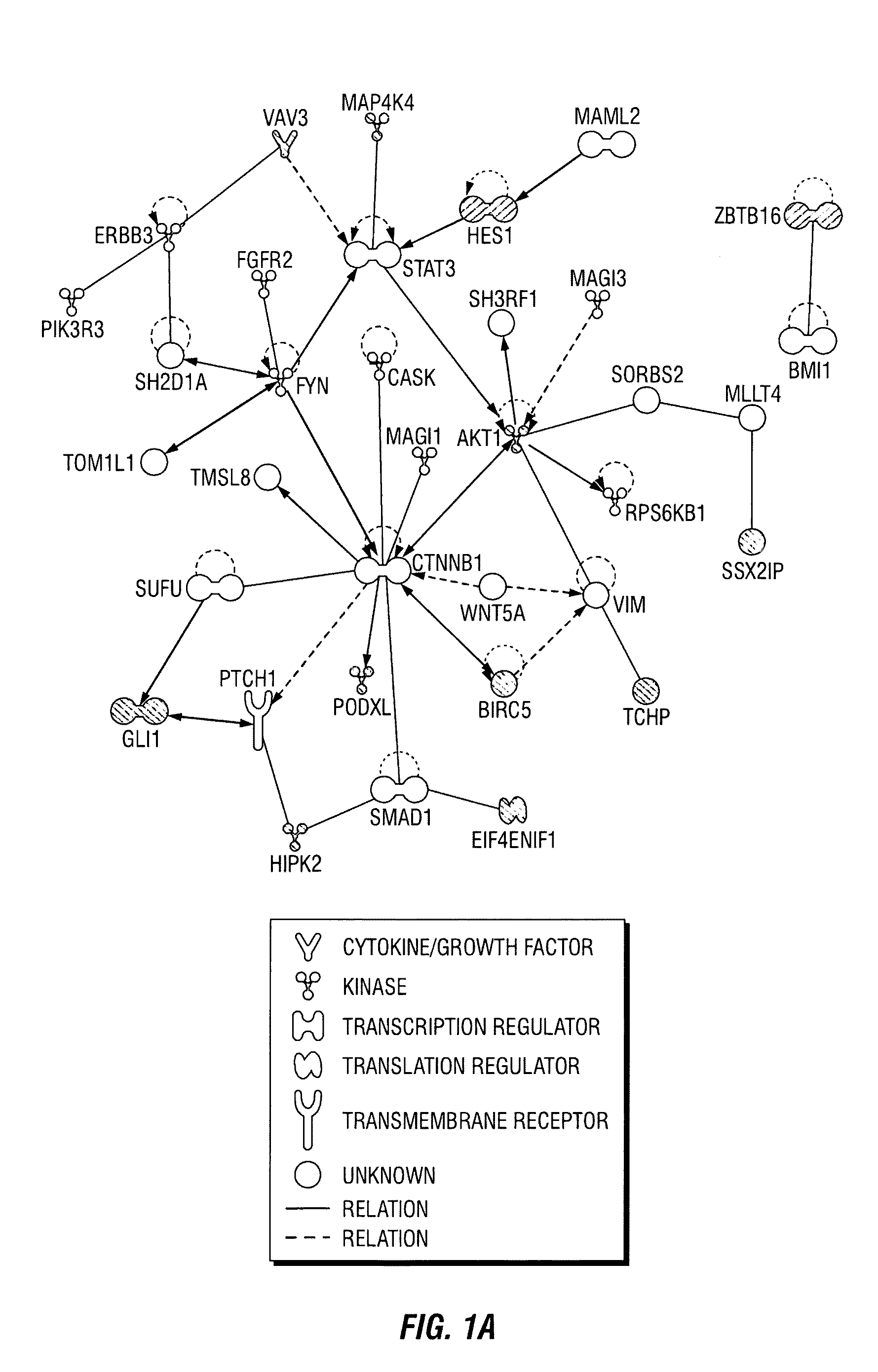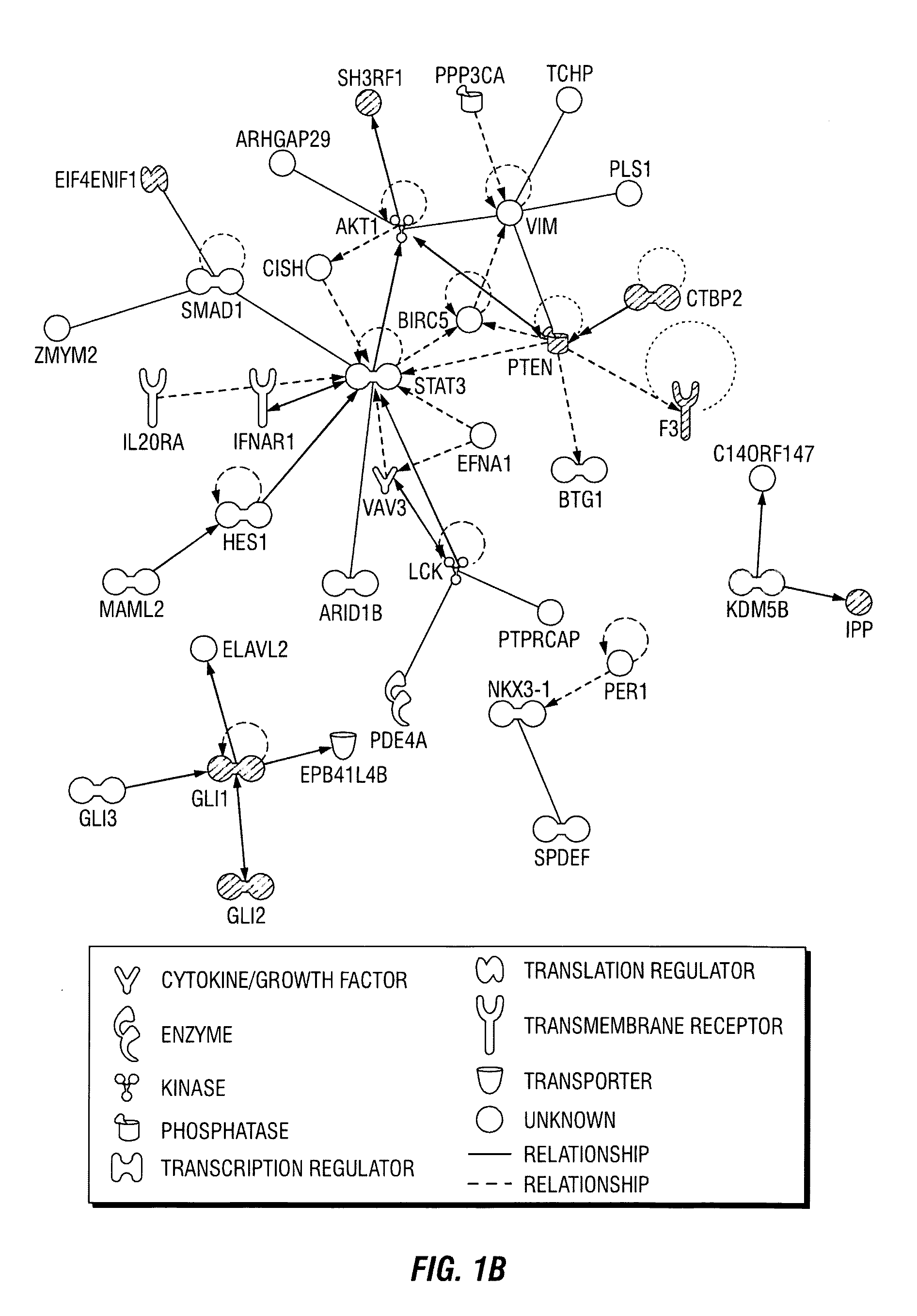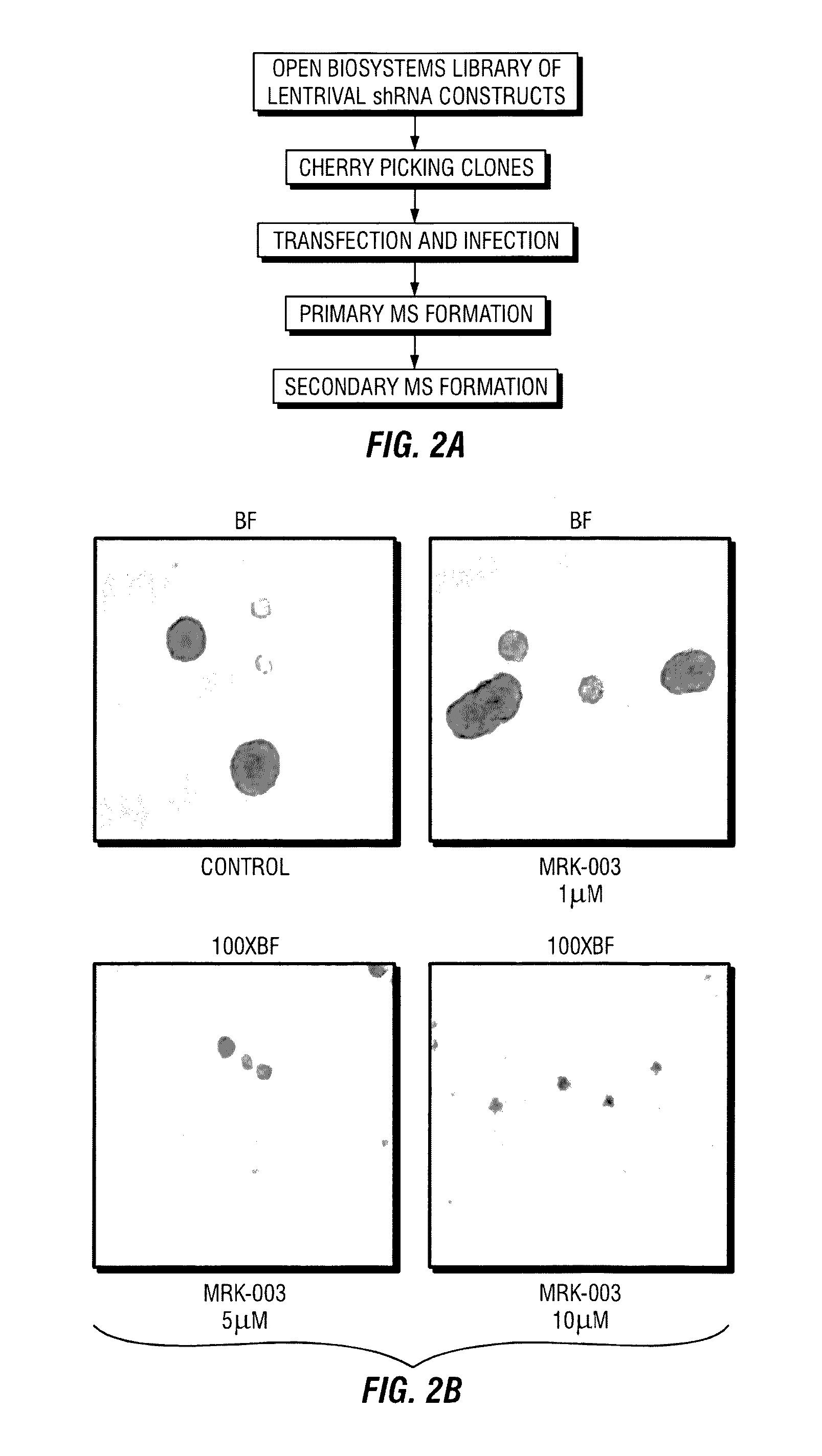siRNA compositions and methods for inhibiting gene expression in tumor initiating cells of breast cancer
a technology of breast cancer and compositions, applied in the field of biochemistry and medicine, can solve the problems of cancers associated with the worst prognosis, and achieve the effects of reducing the severity, duration, or extent of cancer, reducing the severity, and improving the severity of cancer
- Summary
- Abstract
- Description
- Claims
- Application Information
AI Technical Summary
Benefits of technology
Problems solved by technology
Method used
Image
Examples
example 1
shRNA Knockdown of Differentially-Expressed Genes Experimental Procedures
[0115]In previously published results, the inventors described a breast cancer stem cell signature that comprised a set of 493 statistically significant, differentially expressed genes that were present in a tumorigenic subpopulation of breast cancer cells (Creighton et al. 2009). The biological confirmation of the significance of these differentially expressed genes was conducted using a shRNA-based gene knockdown approach, correlating the selective knockdown of target genes with mammosphere formation efficacy (MSFE), an in vitro assay for self-renewal. A library of shRNAs which targets the entire human genome (Open Biosystems, Boston, Mass., USA) was used to create a sub-library of shRNAs against the 493 differentially expressed genes in the tumorigenic signature. A total of 1124 shRNAs (˜2-3 shRNA per gene), and appropriate control shRNAs that were encoded in the pGIPZ vector with a green fluorescent protein...
example 2
Increase of TIC Population in Xenografts after Docetaxel Treatment
[0134]SCID / Beige mice were inoculated with BCM-2665A human primary tumor tissues. After tumors reached 1 cm3 in size, the tumor mice were treated with 20 mg / kg docetaxel. Significant inhibition of tumor growth was observed in the next 14 days (FIG. 4B, left panel). The residual tumor tissues were collected at the end of the experiment, treated with collagenase, and single cells were stained with Aldefluor® reagent (ALDF). Positive staining by ALDF is one of the characteristic markers for TIC. The percentage of ALDF-positive cells was higher in the docetaxel-treated tumor, than in the control samples.
[0135]MDS-Delivered siRNA Nanotherapeutics Targeting Therapy-Resistant TICs.
[0136]To develop siRNA nanotherapeutics targeting TIC, studies have been conducted to confirm the essential roles of the candidate TIC genes. Exemplary siRNA oligonucleotides specific for STAT3, MFL2, and RPL39L were formulated into nanoliposomes, ...
example 3
RPL39 and MLF2 Promote Tumor Initiation and Lung Metastasis
[0156]Triple negative breast cancer is the most aggressive and lethal form of cancer with no targeted therapy. To understand the mechanism of survival of these cancers, a gene signature was identified for breast cancer stem cells (BCSC) derived from patient biopsies. On selective shRNA knockdown of these genes, RPL39 and MLF2 were identified as the top candidates that affect BCSC self-renewal. Selective siRNA knockdown of RPL39 and MLF2 in human cancer xenografts, showed reduced tumor volume and lung metastases with a concomitant decrease in BCSC markers. Next generation RNA-seq confirmed mutations in RPL39 and MLF2 in 50% of lung metastases from breast cancer patients. Additionally, in vitro and in vivo siRNA knockdown of RPL39 and MLF2 showed decrease in nitric oxide synthase suggesting that the two novel cancer genes are driven by this pathway. These results lay the foundation for developing new therapies for these cancer...
PUM
| Property | Measurement | Unit |
|---|---|---|
| concentration | aaaaa | aaaaa |
| concentration | aaaaa | aaaaa |
| length | aaaaa | aaaaa |
Abstract
Description
Claims
Application Information
 Login to View More
Login to View More - R&D
- Intellectual Property
- Life Sciences
- Materials
- Tech Scout
- Unparalleled Data Quality
- Higher Quality Content
- 60% Fewer Hallucinations
Browse by: Latest US Patents, China's latest patents, Technical Efficacy Thesaurus, Application Domain, Technology Topic, Popular Technical Reports.
© 2025 PatSnap. All rights reserved.Legal|Privacy policy|Modern Slavery Act Transparency Statement|Sitemap|About US| Contact US: help@patsnap.com



